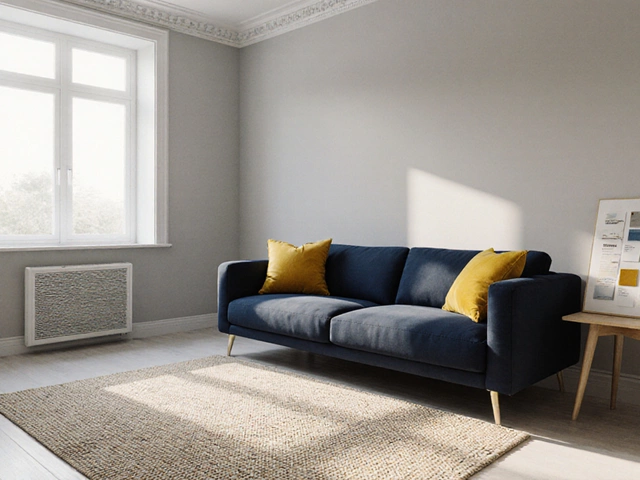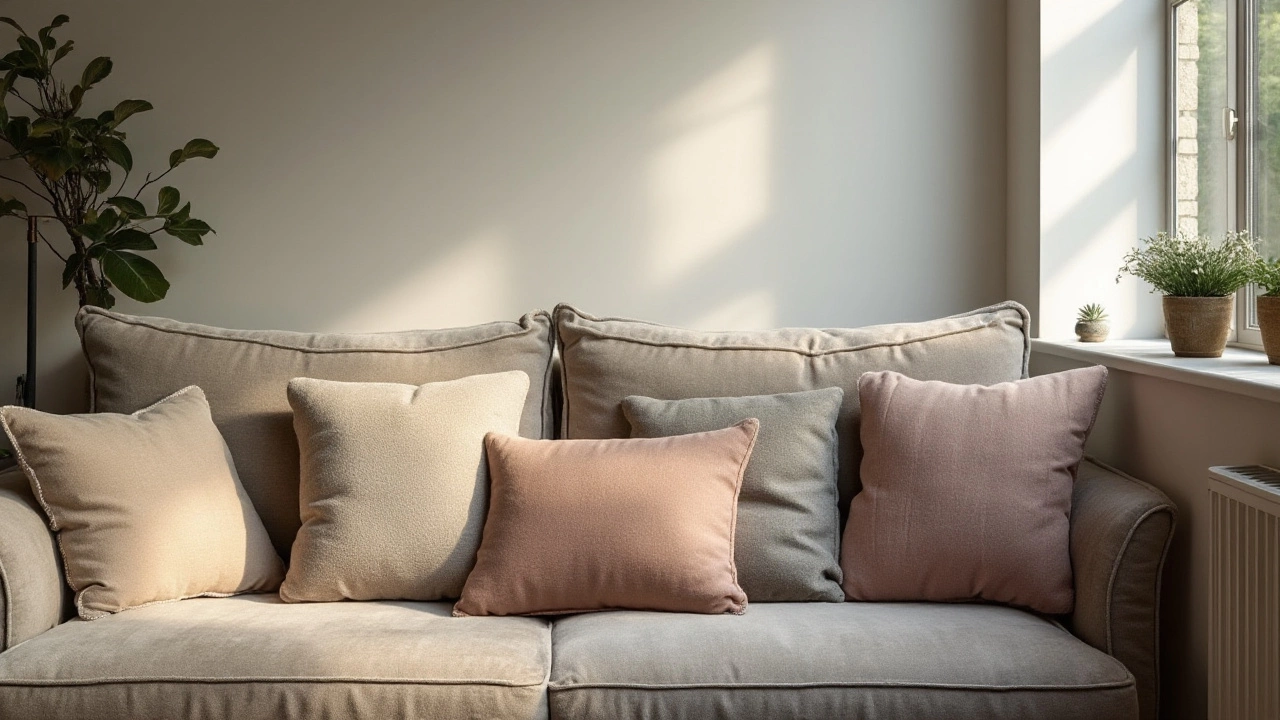
Your sofa is more than just seating; it serves as the heart of any living room and speaks volumes about your style. One simple way to transform a plain sofa into a centerpiece is by adding cushions, but exactly how many should you use to achieve that perfect look? There's no hard and fast rule, but certain tips and tricks can guide you.
In this article, we'll explore the delicate balance between too many and too few cushions, considering both comfort and visual appeal. From minimalistic arrangements to more lavish setups, we'll help you find the cushion count that suits your home and personal vibe. We'll also delve into the design and maintenance of your cushions to ensure your sofa is always looking its best.
- The Basics of Cushion Arrangement
- Finding the Right Number for Your Style
- Choosing the Perfect Cushion Design
- Tips for Maintaining Your Sofa's Look
The Basics of Cushion Arrangement
Arranging cushions on a sofa is an art form that many underestimate. It’s often the small details like this that transform a house into a home. When you take the time to consider cushion placement, you're not only adding to the aesthetic appeal but are also enhancing comfort. The basics start with understanding your sofa's size and shape. A three-seater sofa generally looks balanced with three to six cushions, while a smaller loveseat might fare better with two to three. This isn’t a strict rule but a guideline. The idea is to create a harmonious look that doesn’t overwhelm the space or feel sparse.
A classic cushion arrangement often employs symmetry, which naturally pleases the eye. Matching cushions on either side of the sofa can frame the main seating space, creating a balanced look that guests find inviting. However, don’t shy away from asymmetry if you’re looking for something more dynamic. Layering cushions of different sizes and shapes—such as a couple of larger pillows at the back and smaller, accent cushions in front—can create depth and interest. Choosing complementary colors or contrasting them can also make or break your arrangement. Adhering to a color palette that aligns with your room's decor ensures a cohesive look across your living space.
The Power of Patterns and Textures
When exploring creative cushion arrangements, the power of patterns and textures should not be underestimated. Patterns can add a lively and spirited vibe, while textures might suggest coziness and warmth. For a contemporary look, consider solid-colored cushions in bold hues, but if you fancy a timeless setting, perhaps botanical prints or simple stripes will best suit your style. A great piece of advice from interior designer Ingrid Fetell Lee, who stated, "Refined patterns in textiles can subtly excite the senses, adding layers of interest without overwhelming the eye," speaks volumes to the importance of thoughtful cushion selection. These personal touches echo your style with confidence and flair.Mixing textures such as velvet, linen, or faux fur can enhance the tactile experience and add layers of complexity. Don’t hesitate to play with proportions either—a larger, solid cushion paired beside a smaller, intricately patterned one can make an interesting visual statement. A balance between comfort and style can lead to captivating cushion arrangements that guests—and you yourself—will appreciate. Remember, decorating with cushions is an opportunity to express individuality, each arrangement a reflection of taste and character. Ultimately, whether sticking to traditional symmetry or venturing into eclectic mixes, creating your unique layout is about blending joy with comfort.
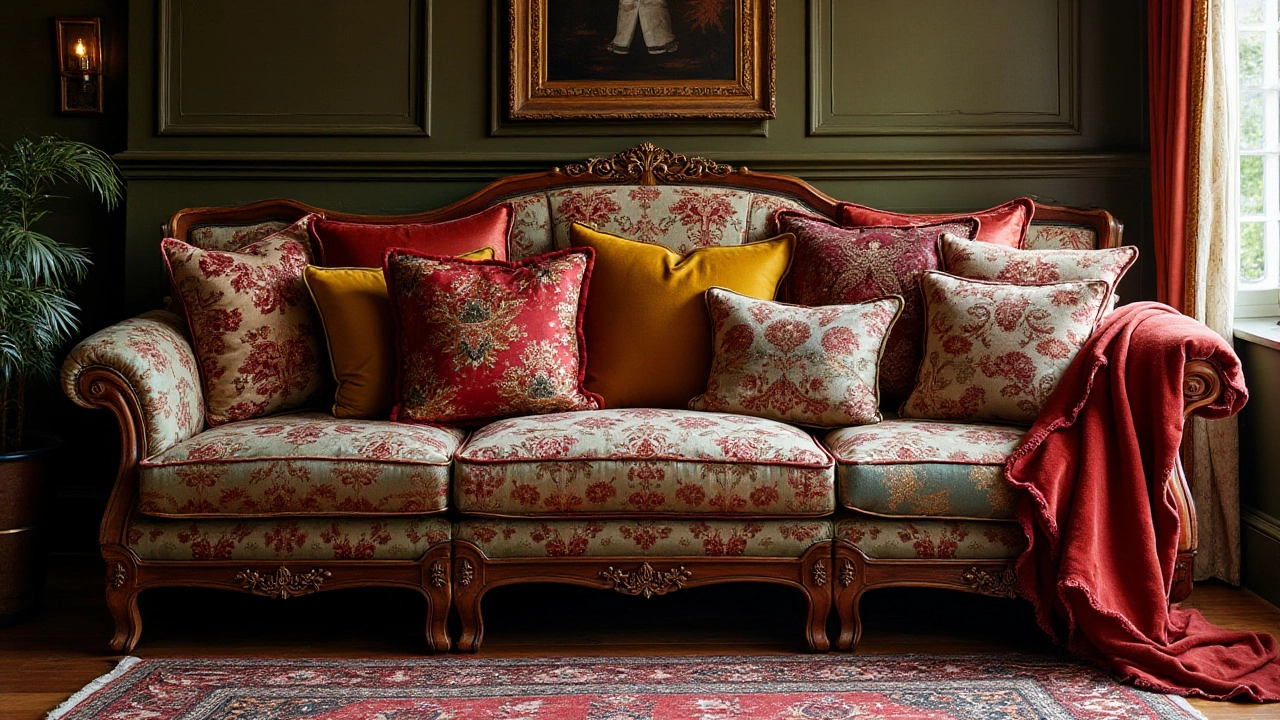
Finding the Right Number for Your Style
Embarking on the quest to discover the perfect number of sofa cushions involves a dance between style and practicality. Each living room tells its own story, and your sofa can be the centerpiece that encapsulates the mood you wish to convey. When considering the right number of cushions, think about the role they will play, both in terms of aesthetics and comfort. The key is to strike a balance—neither overcrowding your sofa nor leaving it feeling stark and uninviting.
If your style leans towards minimalism, less can often be more. Opt for three cushions: one solitary pillow placed centrally, flanked by a couple of others that echo or contrast the sofa's primary color. This arrangement gives your living space an uncluttered, clean look while still adding a touch of personality. Jeffrey Bilhuber, a renowned interior designer, suggests that "Simplicity carried to an extreme becomes elegance," highlighting the power of restraint in design choices.
On the other hand, if you favor maximalism, don’t hesitate to go for more vibrant, numerous cushions. An arrangement of five to seven cushions can infuse a sofa with life and personality. Alternate different sizes and textures, mixing patterns with solids or blending various shades within the same color family. This type of setup creates depth and invites curiosity, drawing the eye and giving each cushion its moment under the spotlight. It’s well-suited for artistic individuals who thrive on inventive and unexpected combinations.
Now, let’s not forget those who find themselves in the sweet spot between minimalism and maximalism—using an even number of cushions often works wonders here. Four cushions placed symmetrically can yield a balanced, harmonious layout that feels both organized and inviting. Opt for a mix of large and medium sizes, arranging them to subtly play off the sofa’s lines and contours. Di Zimmermann, an acclaimed design specialist, once noted, "The secret of design is to let inspiration lead and function follow closely," encouraging us to trust our instincts as we pair design elements with practical needs.
The material and design of your cushions can strongly influence how many you choose to incorporate. Velvet covers might lean towards a rich, opulent vibe, prompting a more lavish cushion count. In contrast, linen or cotton might evoke a breezier ambience, where fewer cushions are better suited. As a rule of thumb, when your cushions are a highlight of the decor, opt for fewer to allow their design to shine. Conversely, when they are meant to complement, don’t shy away from using more to build layers of interest and texture.
Adding data into the mix, a recent survey noted in a home design magazine indicates that 60% of homeowners prefer an odd number of cushions on a sofa, citing that it reflects a pleasing asymmetry, particularly in contemporary settings. While these statistics are insightful, it’s crucial to remember that your preference rules supreme. Embrace your creativity, experiment with different numbers, and rearrange until your heart sings upon seeing your sofa.
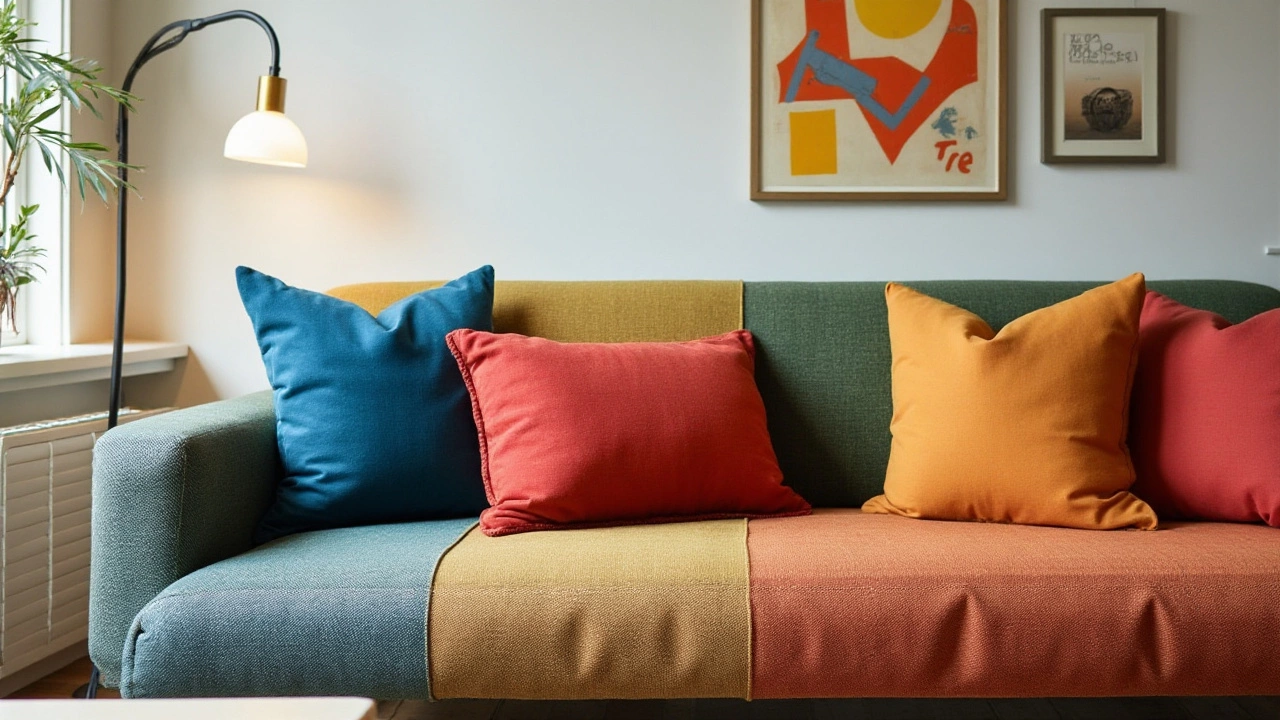
Choosing the Perfect Cushion Design
When it comes to infusing your living space with personality, selecting the right cushion design for your sofa can make all the difference. The task of combining style and comfort might seem daunting, but it can be quite enjoyable. To start, consider your sofa's color and material, often the largest feature in a room, and how your sofa cushions can either complement or contrast with these elements to create the desired effect. If your sofa sports a neutral tone, vivid cushions can act as dynamic accents. Bold colors like deep teal, mustard yellow, or even a striking magenta can breathe life into your space, making it feel lively and modern.
The pattern is another critical aspect. It’s about finding harmony; if your sofa features an intricate pattern, it might be wise to balance it with solid-colored cushions. On the other hand, a plain sofa gives you carte blanche to experiment with designs. Trending patterns include geometric shapes, floral patterns, or quirky prints that add character to your seating area.
As renowned interior designer Nate Berkus says, "Cushions are the jewelry of a room; they add the sparkle and shine."
Texture plays a significant role too. Beyond aesthetics, it's about how the cushions feel against your skin. A blend of different textures not only adds depth but enriches the tactile experience. Consider mixing silk, velvet, or cotton cushions to see how they interact. Remember, functional materials like washable microfiber could be ideal for homes with children or pets. A great design trick is to start with three types: something shiny, something matte, and something textured.
Mood and Season
Seasons can influence your cushion choices; lightweight and breathable fabrics might suit the summer months, while heavier fabrics could lend warmth in winter. Similarly, decorating tips often include swapping designs with seasonal motifs. Summer cushions might feature citrus patterns or nautical stripes, while winter ones could sport deep hues and textured knits. In this way, you can keep your home's décor fresh year-round.Remember to focus on the backstory as well. Sourcing cushions can carry meaningful stories, from artisanal handwoven pieces from local markets to eco-friendly options crafted from recycled materials. These pieces become conversational elements in your home. Balancing all these factors, from color to pattern, texture, and seasonality, helps you achieve a cohesive yet dynamic look for your sofa, allowing your cushion arrangement to evolve with time.
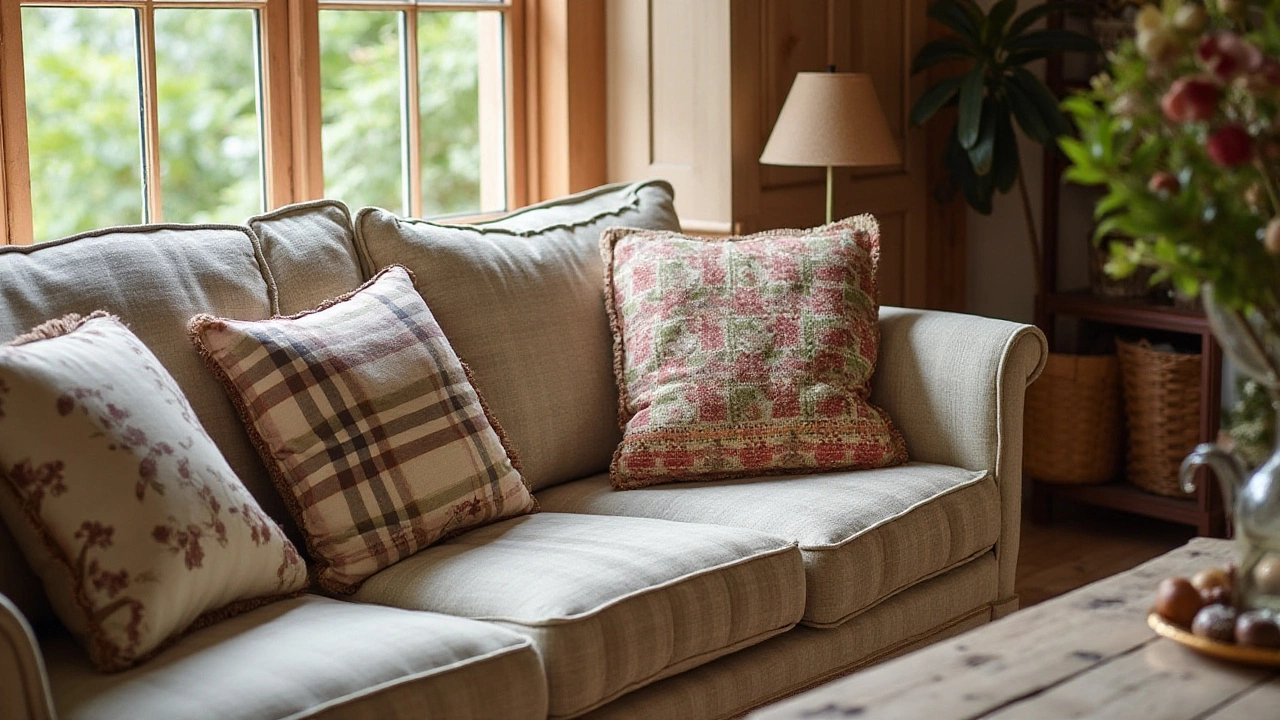
Tips for Maintaining Your Sofa's Look
Keeping your sofa looking as fresh as the day you bought it involves some tender loving care and a few savvy strategies. The beauty of a well-maintained sofa isn’t solely due to a tidy arrangement of sofa cushions but also thanks to regular cleaning and smart fabric choices. Vacuuming your sofa regularly is a basic yet vital step. Dust and grime love to settle in the fabric folds, subtly dulling the vibrant colors over time. Use a soft brush attachment to gently lift dirt without damaging delicate fabrics. If you have pets, consider a lint roller as an additional tool to capture hair and small debris.
Avoid keeping your sofa in direct sunlight if you’d like its hues to remain vibrant. Sunlight can fade fabrics, especially those in lively or darker shades. If shifting the furniture isn't feasible, a simple yet effective solution is to add UV-protective window films or stylish window treatments. They allow you to manage the amount of light that streams into the room, protecting both your couch and cushions from premature fading.
According to Julian Whiting, a renowned interior designer, "Furniture should tell a story of comfort and care, and maintaining it well helps maintain its narrative."
Upholstery cleaning might sound intimidating, but it’s a necessity for long-term maintenance. If your cushions are washable, read the labels carefully. Pre-treating any stubborn stains with appropriate solutions is a smart move. Washing them on a gentle cycle and air drying will help retain their shape and color for years to come. In the case of non-washable cushions, professional cleaning once a year can make a significant difference. This removes deep-set grime without harming the fabric.
Revitalizing Cushions and Interiors
Interior design experts often suggest refreshing the look of your living space with seasonally appropriate cushion covers. You might find lighter, breathable fabrics ideal for summer, while cozy, plush textures are perfect for the colder months. Swapping out cushion covers is a cost-effective way to refresh your entire space. When it comes to arranging your cushions, symmetry offers a classic look, but don't shy away from asymmetrical designs that inject some fun and personality into the room.
Consider incorporating a mix of shapes and sizes in your cushion collection. Use large, square couches as a base, smaller rectangular pillows for support, and eclectic decorative cushions with lively patterns or textures for visual interest. Delicate trims or quirky patterns can reflect a hint of your personality and design preferences.
Apart from visual appeal, ensure the cushions themselves stay plush and comfy. Plumping up the filling with regular shaping sessions avoids saggy disappointments. Invest in high-quality synthetic fill or feather and down mixtures, as they tend to plump back up beautifully, offering support that's both robust and soft.



